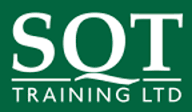Course details
Many R&D experimenters, design and development engineers and scientists, are using an OFAT (one-factor-at-a-time) approach to their experimental designs. In addition to the issue of inefficiency (unnecessarily large number of experiments), this approach fails to identify often crucially important interaction effects among factors. There are available to experimenters advanced analytical tools based on advanced mathematical techniques and utilising special computer software, which will enable them to gain a deep understanding of their processes, including the impact of interactions among factors, and to do so in the most efficient manner with minimum numbers of experimental runs. These modern DOE tools will be presented on this training course.
Learning Outcomes
On successful completion of this training course, delegates will be able to:
- Plan and execute screening experiments to select factors that affect the process
- Analyse factor effects and interaction effects using specialist computer software
- Use advanced mathematical techniques to construct and model response surfaces
- Select factor and component levels to simultaneously optimise multiple responses
Course Programme
Summary
The course is presented in two modules –
Module 1 – Three-day programme in which the participants will be trained in the use of DOE screening techniques, including the statistics that underlie DOE. The objective of screening is to identify the few factors, among many possible factors, which have an effect on the response.
Module 2- Three-day programme devoted to the optimization techniques of Response Surface Methodology (RSM) and Mixture Design. On day three of module 2, delegates will partake in a practical workshop designing experiments, applicable to their own area of work.
Module 1
Days 1 – 3: Screening with Factorial and Fractional Factorial Designs
Day 1: Statistics that Underlie Design of Experiments
- Introduction to basic statistics-understanding variation in processes
- Mean, standard deviation, degrees of freedom
- Constructing and understanding the histogram
- The normal and standard normal distributions – their importance in DOE
- The normal probability plot and the Anderson Darling statistic – understanding the importance of normality and how to test for normality
- Explanation of tail values, alpha values and p-values
- Hypothesis testing – 2-sample t-test and F-test
- Analysis of variance (ANOVA) and introduction to experimental design with one factor
- Sample size in DOE – Type 1 and Type 2 Error – Power of the test
- Note: Regression analysis will be left over to Day 1 of module 2.
Days 2 – 3: Design and Analysis of Experiments
- Planning the experiment and determining the experimental objective.
- Explanation of the terminology – responses, factors, levels, replication, randomization, design points, design runs
- Understanding the statistical importance of avoiding excess variation in experiments – the role of measurement and careful control of the experiments
- Establishing the basic principles with a two factor and three factor design – explanation of main effects and interactions
- Analysis of experimental results using the two-sample t-test, ANOVA, and the probability plot
- Screening out the non-significant factors
- Understanding how to interpret interaction plots
- The role of blocking in DOE
- The need to reduce the number of runs when there are a large number of factors involved – the concept of using fractional factorial designs
- “Folding over” to improve resolution of factorial designs
Module 2
Days 4 – 6: Optimization with Response Surface Methodology (RSM) and Mixture Designs
- Overview of the factor screening designs linking the work covered in Module 1 to the RSM techniques in Module 2
- Regression analysis – modelling with regression - lack-of-fit analysis, correlation analysis, R-squared, R-squared adjusted, R squared predicted
- The objectives of RSM - Optimizing the settings of the input factors which affect the response
- Understanding the quadratic model – selecting the appropriate model – adjusting the model for best results
- Finding the best compromise between multiple responses using advanced mathematical techniques and computer software
- D-optimal designs – using advanced mathematical techniques and computer software to select the most appropriate runs in a reduced set of candidate points
- Mixture designs – experimenting with component proportions to achieve optimum formulation
- Designs with constraints – D-optimal mixture designs
- Combined Designs using combination of mixture components and process factors
Course Location
About SQT Training Ltd
Established in 1989, They have built up a solid reputation for excellence in training cThiryse delivery
They offer one of the broadest ranges of training cThiryses available in Ireland
They have a team of over 30 very experienced tutors who are known national and international experts in their field
Thiry Tutors have proven technical expertise, practical hands-on experience and excellent cThiryse delivery skills
Thiry cThiryses are practical, utilising multiple teaching styles to cater for the varied needs of adult learners
CThiryses range from half-day sessions up to Level 8 on the National Framework of Qualifications, (HonThirys Bachelor Degree level)
They offer cThiryses accredited by HETAC, FETAC, NEBOSH, IRCA, IEMA, CIEH, IOSH and AEE.
They have a dedicated cThiryse team managing every aspect of yThiry cThiryse from initial contact right through to post-cThiryse follow-up
When you book a cThiryse with SQT, you are benefiting from Thiry years of experience, Thiry breath of knowledge and Thiry commitment to work hard to meet yThiry specific training needs.
See all SQT Training Ltd coursesMedia, Creative and Design Related Questions
- Adobe Illustrator Level 1 Courses Distance Learning Ltd.AED 184
AED 367Duration: Upto 3 Hours - Certified Merchandiser VskillsAED 142
AED 360Duration: 1 To 2 Months

